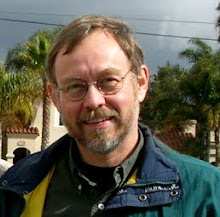Back then I was somewhat unsure of myself and shied away from public speaking (public speaking being more than 4 people!). I had brought images of a small end table I had made and was working up the courage to stand up and hand my slides to Krenov. In turn each person would stand up, introduce themselves, and tell something about their woodworking experience before discussing their slide. As I was telling myself “I can do this – I can do this” – another guy began to speak - to my utter horror he started in on a rant about the outrageous sums of money people were getting for conference tables (why he singled out conference tables I will never know), while truly deserving craftsman were working for starvation wages. The sub-text here was that people building conference tables were selling their souls to the highest bidder. There was general agreement in the room and a lot of anger vented. I can’t recall Krenov’s exact response but I think it was something along the lines of “don’t worry your-self about these things”.
I did not stand up – I wish I had. Looking back though, my design was uninspiring and I am sure it would have taken some hits – especially after admitting that I was one the afore mentioned builders of conference tables.
Krenov’s inf
 luence remains a part of my work to the present day.
luence remains a part of my work to the present day.Many of you who have read my book or have attended one of my workshops know of the story behind the “block and dowel” pulls I use on my furniture.
For those of you who haven’t – several years ago I designed what I thought was a great pull to accent my G&G inspired designs. I was feeling very good about myself for coming up with said design until one day I came upon a poster in my file cabinet. The poster was an announcement of the Krenov workshop I had attended. There on the poster was Krenov’s block and dowel pull which my sub-conscious had filed away and brought forward years later.
Krenov’s work has influenced me in countless ways – some ways I am probably still not consciously aware of. I read his books at a time when I was on fire to devour everything I could find on woodworking and design – and at a time when there wasn’t nearly as much material available as there is now.
Thank you James Krenov, for inspiring me and adding fuel to my passion so many years ago.
















